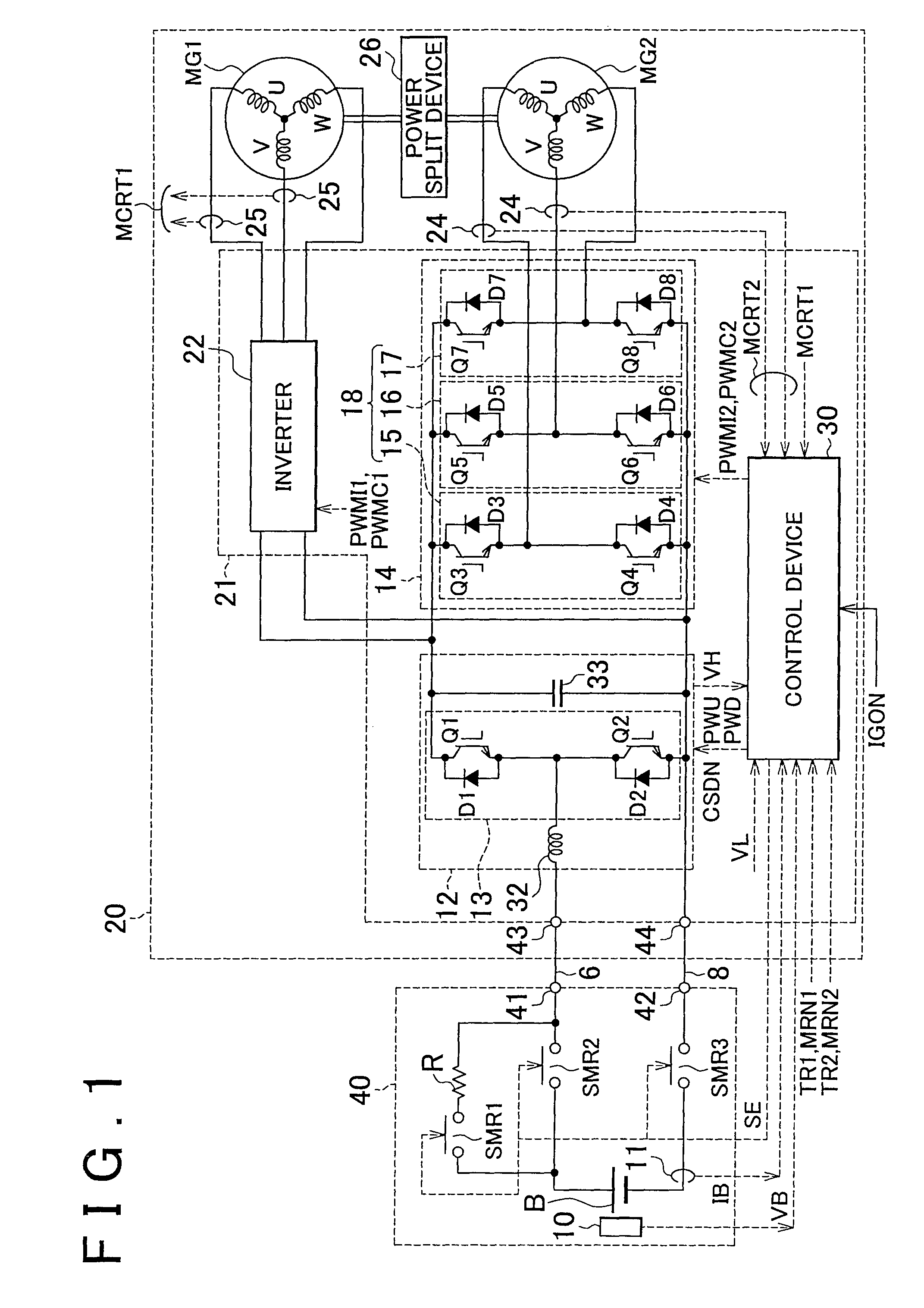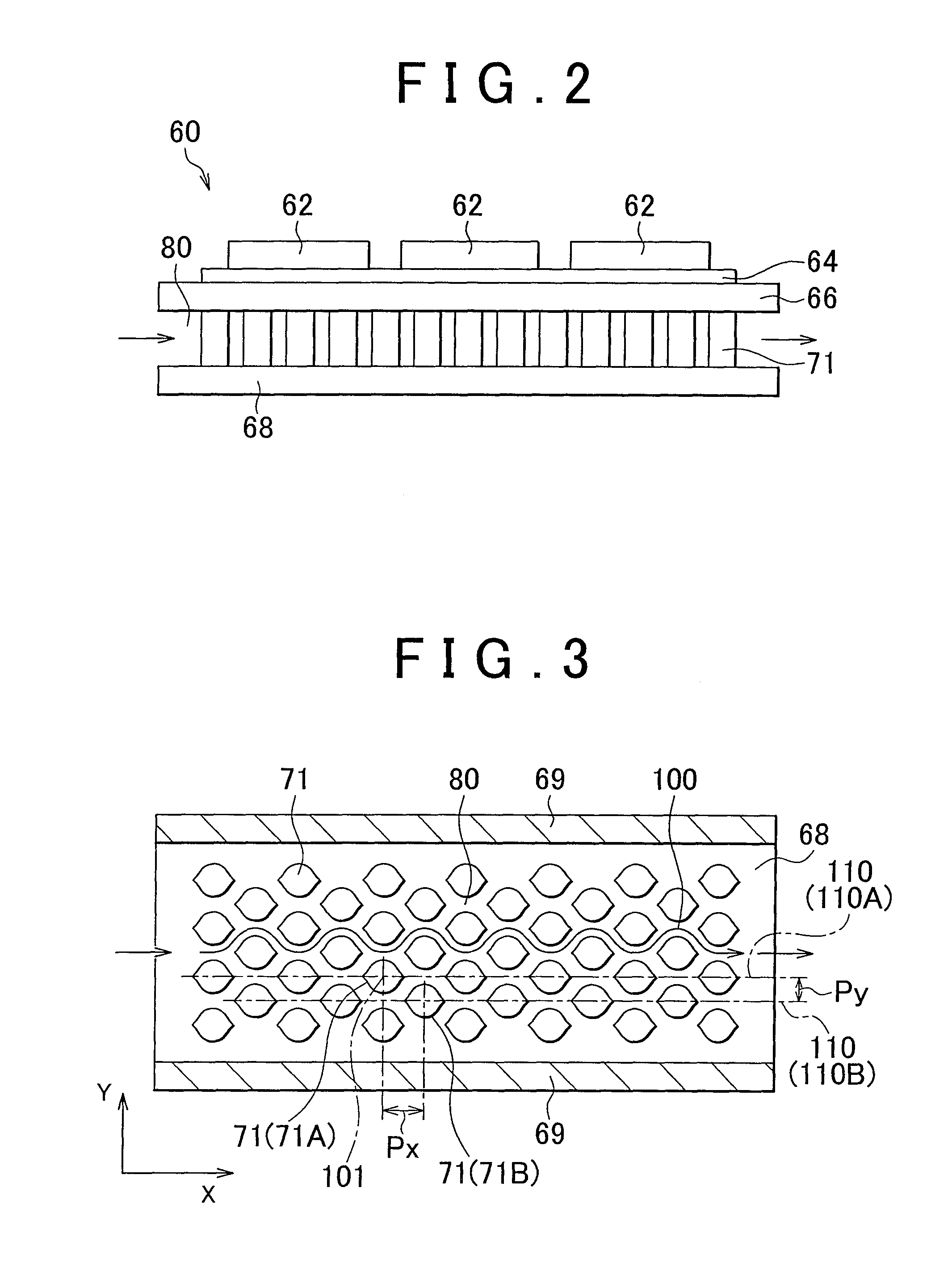Cooling fin structure
a technology of cooling fins and fins, which is applied in the direction of conduction heat transfer modifications, lighting and heating apparatus, and mechanical devices. it can solve the problems of reducing the cooling efficiency of electronic devices and increasing the load on motors, so as to improve the efficiency of heat transfer from the pin fins to the coolant and reduce the pressure loss in the flow of coolan
- Summary
- Abstract
- Description
- Claims
- Application Information
AI Technical Summary
Benefits of technology
Problems solved by technology
Method used
Image
Examples
Embodiment Construction
[0030]One embodiment of the invention will be described with reference to the drawings. In the drawings that will be referred to in the following description, the same reference numerals are assigned to the same or corresponding members or elements.
[0031]FIG. 1 is a circuit diagram showing the configuration of a system concerning motor-generator control of a hybrid vehicle. A cooling fin structure according to one embodiment of the invention is used in a cooler for a power control unit (PCT) installed on the hybrid vehicle. Referring to FIG. 1, the motor-generator control of the hybrid vehicle will be described.
[0032]The hybrid vehicle uses an internal combustion engine, such as a gasoline engine or a diesel engine, and motors to which electric power is supplied from a secondary battery capable of charging and discharging, as power sources.
[0033]The hybrid vehicle has a battery unit 40, a vehicular drive unit 20, and an engine (not shown). The vehicular drive unit 20 has motor-gener...
PUM
 Login to View More
Login to View More Abstract
Description
Claims
Application Information
 Login to View More
Login to View More - R&D
- Intellectual Property
- Life Sciences
- Materials
- Tech Scout
- Unparalleled Data Quality
- Higher Quality Content
- 60% Fewer Hallucinations
Browse by: Latest US Patents, China's latest patents, Technical Efficacy Thesaurus, Application Domain, Technology Topic, Popular Technical Reports.
© 2025 PatSnap. All rights reserved.Legal|Privacy policy|Modern Slavery Act Transparency Statement|Sitemap|About US| Contact US: help@patsnap.com



